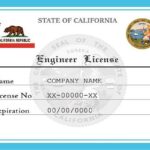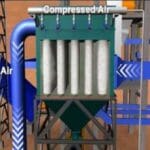2
- Course No E – 1198
- PDH Units 5.00
No data found for Custom Course Number
No data found for Custom Course Units
2
- Course No E – 1198
- PDH Units 5.00
Intended Audience: mechanical, aerospace, controls, noise control, and test engineers.
PDH UNITS: 5
How to Predict & Control Vibrations
Vibrations are an every day fact of life. From an engineering perspective, a vibration usually represents either difficulties (e.g. fatigue, noise, and bearing problems) or capability (e.g. music, cleaning, drilling, and compaction). Because of it's ubiquitous presence, engineers are increasingly being asked to describe, predict and control vibrations. This unique PDH course strategically designed by Dr. Samuel Doughty, PhD, P.E., focuses on two challenges of the Single-Degree-of-Freedom System:- Modeling physical systems in such a way that they can be described as single degree of freedom oscillators.
- The simplest approach to the mathematical analysis of such systems.
Modeling Physical Systems
The concept of degrees of freedom is illustrated through several physical examples that show both single and multiple degree of freedom systems. The meaning of the phrase “degrees of freedom” will be firmly fixed in the mind of the participant, and their understanding of this idea will be broadened beyond the elementary level. Furthermore, the modeling of such physical systems will be demonstrated through a number of detailed examples.Predicting and Controlling Vibrations
The material presented in this innovative online course is intended for any engineer who wants a basic mathematical understanding of single degree of freedom (SDOF) vibrations and how to control vibratory response. In particular, this course provides important commentary and insight into an 80-page set of notes developed specifically for this course by Dr. Samuel Doughty, primarily for mechanical, aerospace, controls, noise control, and test engineers. Throughout the course, practice problems are also provided for you to exercise the ideas and equations involved in predicting and controlling single degree of freedom vibrations.Learning Objectives
At the successful conclusion of this course, you’ll be able to identify and discuss:- The concept of degrees of freedom
- How to model degrees of freedom systems (mostly mechanical systems, with a small electrical selection)
- How to apply Newton’s Second Law of motion in a wide variety of situations
- Application of the standard form for a second order, ordinary, linear differential equation as well as the benefit of not needing to solve this class of equations repeatedly
- The distinction between transient and steady state solutions (i.e. particular and homogeneous solutions in mathematical terminology), and the role of each in engineering applications
- Role of the damping factor in classifying the type of solution to be expected
- The manner in which damping controls each transient and steady state solution
- Terminology such as natural frequency, damping factor, resonance, etc.
- The distinction between free and forced vibrations
- Linearization of nonlinear equations
- Basics of how energy based methods are applied to more complex systems
- The application of engineering mathematical software (MatLab, Mathematica, Maple, etc.)
Course Reviews
2
2
1 ratings - 5 stars0
- 4 stars0
- 3 stars0
- 2 stars1
- 1 stars0
Once completed, your order and certificate of completion will be available in your profile when you’re logged in to the site.
Ethics Courses
Course No E - 1198
PDH Units 5.00











Problems are not numbered and refer to each other. Question about 2-pole motor is not covered in text. 4 digit answers not realistic.